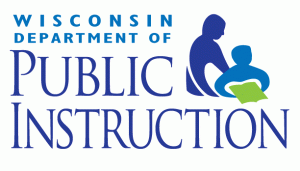 The Department of Public Instruction today released certified state general school aid amounts that each school district will receive during the current (2022-23) school year. By law, the DPI must certify these aid amounts by Oct. 15 each year.
The Department of Public Instruction today released certified state general school aid amounts that each school district will receive during the current (2022-23) school year. By law, the DPI must certify these aid amounts by Oct. 15 each year.
General school aids are the largest form of state support for PreK-12 schools in Wisconsin and are based student counts and year-end financial data from the prior school year (i.e., 2021-22). The bulk of general school aids comes in the form of equalization aid, which is distributed according to a formula that takes into account local differences in property wealth per pupil.
Although the overall amount of general aid being distributed is higher than last year, because the way the equalization aid formula affects the distribution of general aid, not all districts will share equally. Of the 421 public school districts in Wisconsin, 295 will receive more aid than last year (70 percent); 121 will receive less (29 percent).
- View certified general aid amounts by district (sorted alphabetically).
- View certified general aid amounts by district (sorted by percentage change).
The biggest chunk of general aid–equalization aid–attempts to make up for differences between a district’s actual tax base and the state guaranteed tax base set forth in the formula, creating an inverse relationship between equalization aid and property valuations. Districts with lower per pupil property valuations receive a larger share of their costs through the equalization formula than districts with higher per pupil property valuations.
The other, smaller components of general school aids are integration aid (sometimes called “Chapter 220″ aid) and special adjustment aid. The latter, also known as “hold harmless” aid, generally prevents districts from seeing more than a 15 percent reduction in aid from one year to the next and will go to 48 districts this year.
Important Note for School Budgeting Purposes: While the 2021-2023 state budget increased funding for general school aids for the 2022-23 school year by 3.75 percent ($188 million) to a total of $5.2 billion, because revenue limits are frozen under that budget, the increase in general aids (seen by the 295 districts with increases) will go toward offsetting local property taxes rather than increasing school budgets or per pupil spending. With revenue limits frozen, more state aid doesn’t mean school districts can spend more money, because the state caps on how much revenue school districts can collect and spend haven’t changed. Instead, with revenue limits frozen, more state aid reduces some of the tax burden on local property owners.
The DPI also released 2022-23 student enrollment numbers for independent charter schools and private schools participating in state voucher programs. Those enrollment numbers, based on third Friday in September counts, are used to determine the dollar amounts to be deducted or withheld from school districts’ aid payments to fund state parental choice programs for participating pupils who reside within the district. Private school choice and independent charter school programs are funded based on current year data.
You can view the DPI press release on the general aid certification here.
